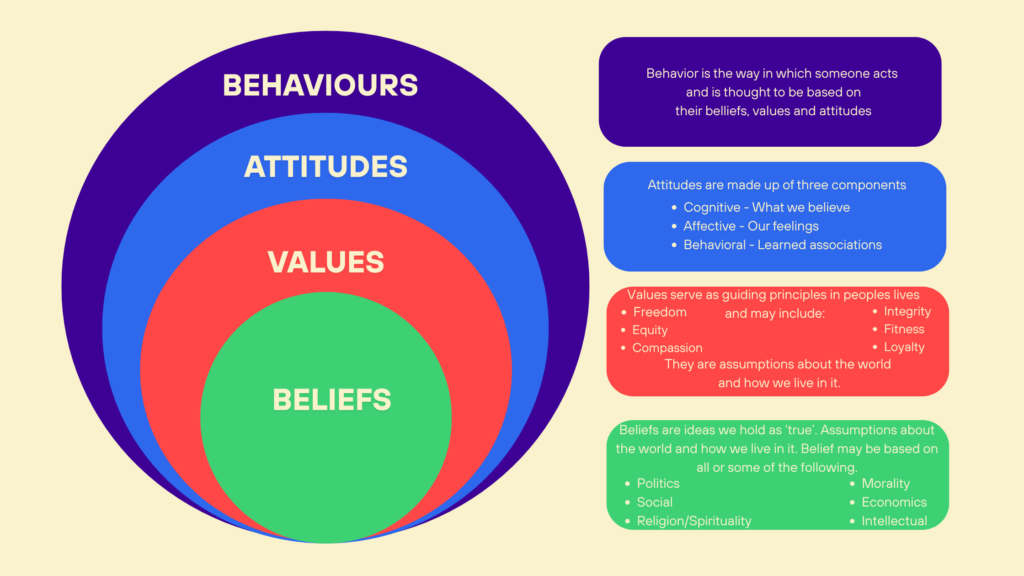You decided to attend the Bible study that a lady from church invited you to. You had been looking for a group of women who shared your interests and thought it would be a good way to make deeper connections. On the day of the Bible study, you are nervous. You tell yourself, “Maybe I shouldn’t go. I’m never good in groups.”
You do decide to attend the Bible study. The women are welcoming, and the group is what you had hoped it would be. If only you hadn’t made that comment. You can’t stop thinking about it. You fear that you sounded foolish. You don’t put yourself in new situations because you always say the wrong thing. Negative self-talk like this is part of a larger pattern that can profoundly affect your emotional health: cognitive distortions.
These mental biases can make you rethink situations and focus on the negative, clouding your judgment and contributing to low self-esteem. Keeping a log or journal of your distortions, journaling situations as they are rather than how your negative self-talk tells you to perceive them, can help you identify how you fall prey to these cognitive distortions.
What are cognitive distortions?
In the 1960s, psychiatrist Aaron Beck named these thought patterns and shared how they can heavily influence mental health. Psychiatrist and author David D. Burns later popularized and expanded the concept of cognitive distortions in his book Feeling Good: The Mood Therapy, when he explained how recognizing cognitive distortion leads to more positive information processing.
Cognitive distortions are faulty beliefs and perspectives about ourselves and/or the world. They are illogical thoughts that can be subconsciously reinforced over time.
Cognitive distortions take many forms but have some common characteristics. All cognitive distortions are tendencies or patterns of thinking or believing that are false, inaccurate, and/or potentially cause psychological damage.
Why Do We Experience Distorted Thinking?
Cognitive distortions can significantly affect mental health, and there are many potential reasons why we experience them.
Our brains are wired to keep us safe from danger. Our survival mechanisms depend on negative thoughts like fear and worry to alert us to potential danger. Our ancestors relied on survival instincts to keep them alive. Their environments were full of threats and danger, so having a heightened sense of fear was essential to the future of the human race. The amygdala is the portion of the brain responsible for emotional processing when we are in a situation that feels overwhelming or dangerous; our amygdala does what it is supposed to do: it starts to alert us that the situation we’re in feels uncomfortable, and then it hijacks our rational thinking brain and sends us into fight, flight, freeze, or fawn. The downside is that we no longer fight for survival like our ancestors. Our amygdala overreacts to non-threatening situations, warns us that a problem is negative, and sends our system into survival mode in unhelpful ways in unnecessary situations.
Negativity Bias
Negativity Bias, also known as positive-negative asymmetry, is our tendency to not only register adverse events more readily but also to dwell on these events.
This psychological phenomenon explains why bad first impressions can be difficult to overcome, and the sting of harshly spoken comments and past traumas can have such long-lasting effects. In almost any interaction, we are more likely to notice negative things and later remember them more vividly.
For example, you and your mother are having a wonderful day together. You have been out shopping, and you had a nice lunch, but on the drive home, she offhandedly mentions that thing, that irritating dig she cannot help but throw in whenever you are with her. You find yourself fuming over it the rest of the evening—even though the day was pleasant, you can’t enjoy it because of that negative comment.
Mental health conditions and trauma
Mental health conditions, often caused by chemical imbalances, can lead to cognitive distortions. Chemical receptors in the brain can underproduce neurotransmitters like dopamine and serotonin, causing thoughts to spiral.
In addition, traumatic events from the past can create strong memories. Strong memories are stored in the brain as more vivid and more easily accessed memories. Present events can trigger distressful memories, leading to flawed thinking.
External factors
Our social media-driven, twenty-four-hour news cycle tends to bombard us with more negative information than positive. We hear and see scary, worrisome, and stressful information about our lives and the future. This distorts our perspective and perpetuates a negativity bias.
Upbringing and life experiences
Cognitive distortions can frequently originate in childhood. We learn from the behaviors we observe and the feedback we receive.
As a child, you might have made a mistake and been told it affected your worth. You might have been raised in a household where every situation was earth-shattering and panic-inducing. You might have had a parent who was always the victim; someone else was always to blame for their job losses, temper tantrums, and poor money management. Your parents might have criticized everything you did that did not meet their standards but never praised you for your accomplishments.
7 Types of Cognitive Distortions
1. Overgeneralization
A type of cognitive distortion in which a person draws broad, sweeping conclusions based on a single adverse event or experience, leading to a sense of defeat or failure in various areas of life. For instance, a person might believe they are not attractive to females because they are too short. They assume, “No woman will ever date me because of my height.”
2. Black-and-White thinking
Black-and-white thinking (dichotomous thinking, polarized thinking) views the world in absolutes with no gray areas. This all-or-nothing thinking eliminates the rich spectrum of human experience, reducing complex outcomes and behaviors to simple categories like good or bad people, success or failure, always or never, and love or hate. It is a mental shortcut that strips nuance away from one’s understanding of events, leading to skewed self-esteem and well-being. An example of this
3. Jumping to Conclusions
Jumping to conclusions manifests in one of two ways: mindreading, where you think you know how others will react or feel before the event, and fortune-telling, where you predict adverse outcomes without basis. Drawing conclusions about future events with little or no supporting evidence can lead to erroneous beliefs about future events or others’ thoughts.
4. Emotional Reasoning
Whenever someone concludes that their emotional reaction to something defines its reality, they are engaged in emotional reasoning. Any observed evidence is disregarded or dismissed in favor of the assumed “truth” of their feelings. Here are some examples of what’s commonly known as emotional reasoning:
- You can’t help feeling fat, though your doctor and those around you tell you that your weight lies comfortably within the normal range.
- You feel guilty, so you conclude you must be guilty even though there is no evidence that you have done anything wrong.
- In your relationship, you struggle with feelings of jealousy. You can’t resist accusing your partner of infidelity even though there is no evidence of any impropriety on their part.
- You struggle with feeling worthless; despite having substantial evidence, you remain convinced of your worthlessness.
- You feel stupid. Despite receiving good grades in high school, graduating with an above-average GPA from college, and achieving at least as much as your peer group as an adult, you remain unconvinced of your competence.
5. Catastrophizing
Catastrophizing is a cognitive distortion in which a person consistently expects the worst possible outcome of a situation, even when there is no factual basis for such a belief. Instead of considering a range of possibilities or even more positive outcomes, one’s mind automatically jumps to the most negative scenario. For example, your husband typically gets home from work at 5:45, but he is not home, and it is 6:00. Instead of thinking, “he probably hit a traffic jam,” you panic and think, “he has been in an accident.”
6. Blaming
Blaming is refusing to accept accountability in a situation by projecting that accountability onto others and refusing to take responsibility for our thoughts and actions. An example is when your co-worker arrives to work several minutes late, and she is visibly upset. You ask her what is wrong. She says she got a speeding ticket, her third. She states it wasn’t her fault; she was going with the traffic flow, and the cop picked her from the middle of all the other cars.
7. Double standard
The double standard is having incongruent standards for others versus yourself. An example might look like a spouse who has an expensive hobby; they see no problem with the money they spend on the equipment, the clothing, the fees for the game, the alcoholic beverages spent while enjoying the hobby, and so on. Still, they throw a tantrum when their partner goes to lunch with a friend.
How to overcome cognitive distortions
Challenging cognitive distortions can help you maintain self-esteem, navigate emotional situations, and approach your interpersonal relationships with integrity. With a few strategies, you can start transforming your negative thoughts into constructive actions:
1. Journaling
Journaling has numerous benefits, including reducing stress and anxiety, improving emotional regulation, enhancing self-awareness, and improving memory. Journaling provides a safe space to process thoughts and emotions, helping to reduce feelings of overwhelm and anxiety. Writing about challenging experiences can help individuals understand their emotions and develop coping mechanisms. Journaling encourages reflection and introspection, allowing individuals to understand themselves better, their values, and their motivations. Journaling can help individuals clarify their thoughts and identify solutions to their problems.
2. Challenging assumptions
- What basic assumptions drive your negative thought patterns or self-destructive behaviors?
- Where does that assumption come from? What is its source? What happened that made you start to believe that assumption?
- What are the advantages and disadvantages of the assumption?
- What is a better or more accurate assumption that maximizes the advantages and minimizes the disadvantages to you?
3. Fact or opinion challenge
Review your journal or write your thoughts on a sheet of paper. Evaluate your beliefs one by one. Are they facts or opinions? Be frank and truthful with yourself. Facts are objectively true. Opinions are personal beliefs that may or may not apply to others outside you.
4. Semantic method
Statements using “should” and “must” can harm how you perceive yourself and your environment. The semantic method is a way to reframe these statements more positively and edifyingly. Instead of saying, “I should have said it that way in the meeting,” say, “I wish I had said that in my meeting, but it is okay that I didn’t.”
5. Define terms
Words have power. By revisiting the labels you apply to yourself and others, it becomes easier for you to see that an event or situation does not define you. What does it mean to be a “failure”? What does it mean to be “overwhelmed”? There are payoffs to using labels. Ask yourself, What is the negative payoff? Do I let myself off the hook? What is the positive payoff? Does it fuel me to rise above the label?
6. Mindfulness
John Kabat-Zinn, the renowned researcher and teacher of mindfulness, defines mindfulness as paying attention in a particular way: on purpose, in the present moment, and non-judgmentally. It’s about bringing awareness to the unfolding of experience moment by moment without getting caught up in our thoughts or emotions. It’s about cultivating a sense of curiosity, openness, and acceptance toward what’s happening inside and outside us.
7. Cost-benefit analysis
Are your cognitive distortions helping or hurting you? That is the key question of the cost-benefit analysis practice. By evaluating the advantages and disadvantages of your negative thought patterns, you can more easily see that your cognitive distortions are a limited framework to assess your experience. Make a list of pros and cons, then re-evaluate.
Reframing your thoughts
Cognitive distortions can cause one to lose touch with reality and present situations in a negative light. But mindfulness techniques, learning to listen to yourself, and getting coaching or therapy in Cognitive Behavior Therapy (CBT), a structured, goal-oriented form of talk therapy that helps people manage mental health issues by changing how they think and behave.




